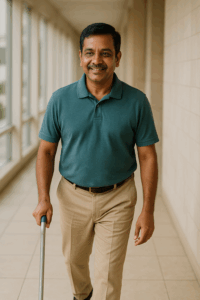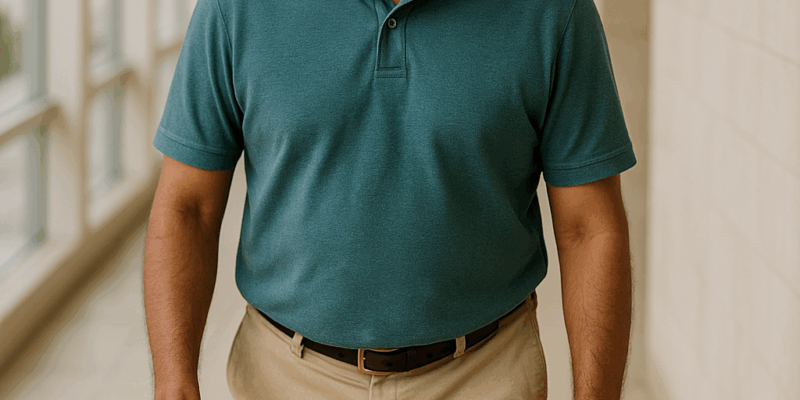What is platelet-rich stroma treatment for knee osteoarthritis in India?
Knee osteoarthritis (OA) remains one of the most common and debilitating conditions facing patients today — involving pain, stiffness, reduced mobility and poor quality of life. Traditional treatments (analgesics, physiotherapy, hyaluronic acid injections, and even knee replacement) help in many cases, but often fall short of halting the disease or significantly restoring joint health.
Here, the concept of Platelet-Rich Stroma (PRS) emerges as a promising regenerative therapy. The video above introduces PRS in the context of knee arthritis, and in this article, we’ll explore what PRS is, how it works, evidence for its use, and how it could fit into the treatment spectrum — especially in the Indian orthobiologics setting.
Understanding PRS — What does it mean?
PRS stands for Platelet-Rich Stroma. It is not just a platelet concentrate (as in PRP) but a combination therapy, merging two components:
-
Platelet-Rich Plasma (PRP): a concentration of a patient’s own platelets obtained from their blood, rich in growth factors and cytokines that promote healing. PMC+2orthobiologicsurgeryindia.com+2
-
Stromal Vascular Fraction (SVF): derived from the patient’s adipose (fat) tissue, this includes multiple cell types (mesenchymal/stromal cells, pericytes, endothelial cells, immune regulatory cells) along with extracellular matrix. MDPI
When you combine PRP + SVF (mechanically isolated adipose tissue stromal fraction) you get the therapeutic concept of PRS. As one study described, a series of 15 patients with knee OA treated with a single injection of PRS showed improvement in pain and function at 12 months. MDPI+1
In short: PRP provides bioactive growth factors, SVF provides regenerative cells & a matrix scaffold — together, aimed at modulating inflammation, promoting tissue repair, and improving the joint environment.
How does PRS treatment work (step-by-step)
Here’s a simplified overview of the PRS procedure as used for knee osteoarthritis (OA) cases:
-
Harvesting
-
Venous blood is drawn and processed to create PRP. orthobiologicsurgeryindia.com
-
Adipose tissue (fat) is harvested (often via mini liposuction from thigh, buttocks, or abdomen) to obtain the stromal vascular fraction (SVF or tSVF). orthobiologicsurgeryindia.com+1
-
-
Processing / Preparation
-
The adipose tissue is mechanically processed (to obtain tSVF) and combined with the PRP to form the PRS mixture. MDPI+1
-
The mixture is prepared under sterile conditions.
-
-
Injection
-
The PRS is injected intra-articularly (into the knee joint) under ultrasound guidance to ensure accurate placement. orthobiologicsurgeryindia.com
-
The procedure is minimally invasive: local anaesthesia, no arthroscopy or major surgery required. orthobiologicsurgeryindia.com+1
-
-
Post-Procedure Care & Monitoring
-
Because PRS uses autologous tissues (the patient’s own), the risks of rejection are minimal. orthobiologicsurgeryindia.com
-
Patients are monitored over months for improvements in pain, stiffness, mobility, and overall joint function.

-
Evidence: What do studies show for PRS in knee OA?
Here are some key points from the available literature (which you as an orthobiologic surgeon in India may find relevant for patient education):
-
In a 2020 case-series of 15 patients aged 43-75 years with knee OA (Kellgren-Lawrence stage II-III) treated with a single PRS injection: significant improvement in pain (VAS), function (WOMAC), stiffness (Lysholm) at 12 months follow-up. No complications reported. MDPI
-
Systematic reviews/meta-analyses of PRP (without SVF) already demonstrate PRP can reduce pain and improve function in knee OA, though results vary with preparation protocols. BioMed Central+1
-
The emerging evidence suggests that combining PRP + adipose-derived stromal fraction may provide better or more durable results compared to PRP alone — though larger controlled trials are still needed. orthobiologicsurgeryindia.com+1
Key takeaway: PRS is promising for knee OA, especially moderate stages, but it is not yet universally the “standard of care”— patients and clinicians must discuss expectations, costs, and suitability.
Who is a candidate for PRS?
Based on current practice and literature (and drawing on the video content), the ideal candidate for PRS would be:
-
A patient with mild to moderate knee osteoarthritis (not end-stage, massively deformed joint)
-
Someone who has tried conventional treatments (physiotherapy, analgesics, hyaluronic acid/viscosupplementation) but still has pain/stiffness
-
A person motivated for a regenerative, minimally invasive procedure, willing to pay (depending on clinic/hospital) and understand that results vary
-
Someone aware that PRS is a complementary/alternative to standard treatment—not always a guaranteed “repair” of cartilage, but an enhancement of the joint environment
For very advanced OA with severe joint destruction, major bone loss or large deformity, joint replacement may still be necessary. PRS can help delay surgery, but is unlikely to replace surgery in such cases.
What are the advantages & limitations?
Advantages
-
Autologous: uses the patient’s own blood + fat tissue → lower risk of immunologic rejection/major complications.
-
Minimally invasive compared to joint replacement or major surgeries.
-
Potential to address the underlying degenerative/inflammatory mechanism instead of just symptomatic relief.
-
Shorter downtime; patient walks in, walks out (as per some descriptions). orthobiologicsurgeryindia.com
Limitations & Considerations
-
Cost: advanced biologic/regenerative therapies may be expensive (especially in private practice)
-
Evidence: while promising, longer-term data (5-10 years) are still limited
-
Not a guaranteed cure: results vary among patients; cartilage regeneration extent may differ. MDPI+1
-
Procedure-specific: harvesting fat (liposuction) may carry minor donor-site discomfort/risks
-
Suitability: not all OA patients are ideal candidates — must assess stage, joint alignment, other co-morbiditie
FAQ: Frequently Asked Questions
Q1. How long does it take to see results after PRS injection?
In the cited study, patients saw pain and stiffness improvement within a few weeks; significant improvement persisted at 12 months. MDPI+1
Q2. Is the procedure painful? What is the recovery time?
The injection is done under local anaesthesia; fat harvesting is via mini liposuction (small incision). Recovery is relatively fast – many patients walk out the same day without major downtime. orthobiologicsurgeryindia.com
Q3. Are there risks or side effects?
Since PRS uses the patient’s own tissues, risk of immunologic reactions is low. Standard risks of injections apply (infection, bleeding, pain). Donor-site fat harvesting may cause bruising or discomfort. In the cited series, no complications were reported. MDPI
Q4. How much does it cost in India?
Costs vary widely depending on clinic, city, equipment used, and aftercare. It’s best to contact your clinic for a tailored quote and compare what the package includes (e.g., harvesting, processing, injection, follow-ups).
Q5. Will I still need knee replacement later?
PRS aims to delay or reduce the need for knee replacement by improving the joint environment and function. However, in advanced joint destruction, replacement may still be needed. Discuss with your orthopaedic/regenerative specialist whether you are a candidate for PRS and how it fits your arthritis stage.
Conclusion
The therapy of Platelet-Rich Stroma (PRS) presents an exciting frontier in regenerative treatment for knee osteoarthritis — particularly suited for patients in India looking for advanced options beyond standard injections or waiting for joint replacement. When used in the right patient, PRS may help reduce pain, improve function, enhance quality of life and possibly delay more invasive surgery.
If you or someone you know is dealing with knee OA and exploring advanced options, consider discussing PRS (Platelet-Rich Stroma) with your orthopaedic/regenerative specialist. Understanding the evidence, procedure, suitability and cost is key.
This blog post is for informational purposes and does not substitute a personal consultation.

